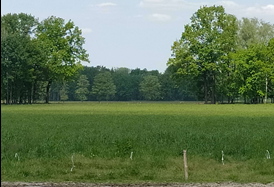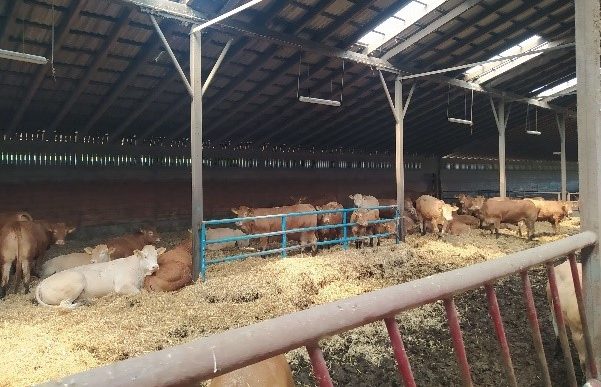A visit by farmers to a demonstration farm in Łagiewniki Wielkie as part of sub-measure 1.2 “Support for demonstration projects and information activities” of the Rural Development Programme 2014–2020 on “Modern technologies for breeding and raising beef cattle”.
Under sub-measure 1.2 “Support for demonstration projects and information activities” of the Rural Development Programme 2014–2020, demonstrations on “Modern technologies for breeding and raising beef cattle” are being implemented. This operation is co-financed by the European Union with funds from the European Agricultural Fund for Rural Development (EAFRD).
Demonstrations are held in various regions of Poland, each with a specific objective tailored to the needs of selected farms. An important element is to ensure the care and testing of the performance and breeding value of the beef cattle herd on the demonstration farms. This role is fulfilled by the Polish Association of Beef Cattle Breeders and Producers, in cooperation with the National Research Institute of Animal Production.


The demonstration in Łagiewniki Wielkie was on “Improving the efficiency of beef production through breed selection and monitoring the production process”. The visit took place on a demonstration farm specializing in breeding Limousin and Blonde d’Aquitaine beef cattle in Łagiewniki Wielkie (Lubliniec district, Śląskie Voivodeship). The farm is owned by Jacek Klimza, a well-known and respected breeder in the environment, who also sits on the board of the Polish Association of Beef Cattle Breeders and Meat Producers. The farm has been cooperating for many years with the Laboratory of Animal Cytogenetics and Molecular Genetics of the National Research Institute of Animal Production.
The herd numbers more than 300 cattle, where a strictly controlled policy on the origin of the animals is followed. Selection of individuals for reproduction is based on highly rated bulls with significant genetic potential. The farm covers 65 ha of its own arable land and 75 ha is grassland, including pasture, meadow and grass on arable land. During the season from May to October, suckler cows with calves, in-calf heifers and bulls graze on the pastures around the clock. However, heifers aged between 0.5 and 1.5 years are kept indoors in an open-sided housing system with access to an outside yard. After the end of the 24-hour grazing season, all these groups of animals are kept on similar terms to heifers aged 0.5 to 1.5 years – indoors in an open-sided housing system with 24-hour access to an outdoor run near the barn.
The on-farm demonstrations include spring/summer grazing and pasture preparation for the grazing season, as well as autumn grazing and herd preparation for the winter season. In addition, the demonstrations cover aspects of animal housing conditions, monitoring animal health in both pastures and barns, including controlling the occurrence of heat stress using innovative monitoring and measurement solutions. Three farmer visits are planned to observe the entire grazing season.
During the first visit, which took place on 29 May 2023, participants had the opportunity to meet the owner of the farm and visit the entire farm with its equipment (15 beef cattle farmers from the Gliwice district). The purpose and innovative elements of the demonstration were discussed in detail and a tour of the barns, pastures, outside yards and machine stock was made possible. The main topics of discussion were the keeping and breeding conditions of cattle, breeding prevention, various methods of planned reproduction and bull selection in order to obtain high genetic value and maximize the profitability of beef production. The aspect of rational pasture use, the feeding methods used on the farm and the animal welfare introduced, also in the context of the new eco-schemes, were also discussed.
The participants listened to presentations on “Breeding work on a beef cattle farm” and “Cattle reproduction and reproductive management”, given by Adam Jurga, the farm’s supervisor, and additionally by Bartosz Szymik, Ph.D., the scientific supervisor. During the presentation, the audience became acquainted with the most commonly bred breeds of beef cattle in Poland and their characteristics predisposing them to various forms of use and fattening. Issues related to reproductive management and the use of techniques supporting reproduction of beef cattle in herds were also discussed. Finally, Bartosz Szymik, Ph.D., presented the equipment and systems planned for purchase as part of the “Demonstrations” project.

